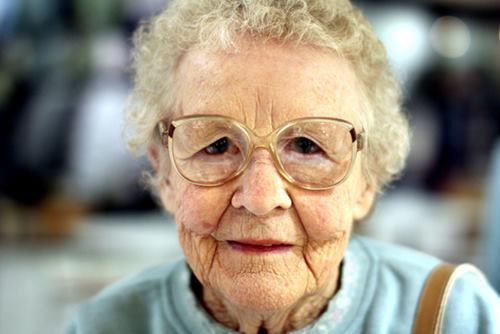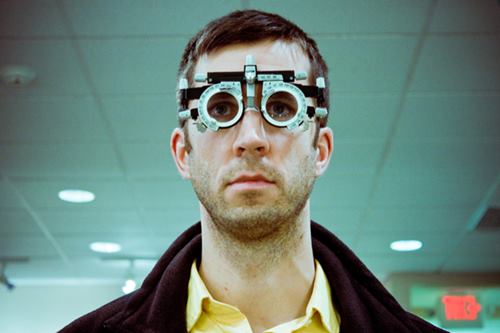I had another very interesting client today. This client allowed me to get an insight into how the human mind works, and gave very clear metaphors of how she saw her problem.
This client was a woman in late middle age who had suffered from anxiety most of her life. She came to see me because she is having trouble playing the card game Bridge. She is actually a good and skilled player. But whenever she has to partner with someone she does not know, her game falls apart. She is sure that her new bridge partner will be better than her. My client gets anxious at the thought of what the other person might think about her play. She then worries about this until by the time she gets to the card table she is a nervous wreck, and she plays terribly badly. This therefore fulfils her own prophecy and the whole cycle repeats with the next new player.
Metaphor therapy
I decided to use metaphor therapy. I got her to take some deep breaths to calm herself. Then I asked her to think about the last bridge game she had when she felt she just could not deal with it. I got her to associate into the feeling. "Think about the shape of the feeling," I told her. "What shape is that feeling?"
She is one of those clients who fidgets a lot, and moves around in the chair. I began to wonder if this method was going to work. Then she surprised me by saying "it's ovalish.". So I asked, "How big is it?" She guested with her hands to indicate that it was about the size of a dustbin lid. I asked some more clarifying questions and she told me "it's a big piece of coal."
I then started developing the metaphor of the "big piece of coal". She describes in detail has been black and shiny and heavy with lots of sharp angles. I then asked "can you make it a little bit bigger?" "Yes," she said. "And a little bit bigger still?" "Yes," she said. This told me that she actually had some control over it.
I then asked "can you make it a little smaller?" "And a little smaller still?" There was a period of silence until she said "no, it won't get any smaller. It is just getting more dense."
Changing the first mental block
She had now found her subconscious blockage. When a client says they cannot change a metaphor it means that there is something in their unconscious mind which is defending that. This is usually a fear of being unable to handle the change that might come afterwards.
So I changed my approach. I started to suggest to her ways that this thing could change. The idea was to keep suggesting things until I suggested something that her mind would accept. I tried suggesting hammers, drills, crushers, anything that would break up that "piece of coal".
Nothing seemed to work. She steadfastly refused to think of anything that could affect this "piece of coal". I was running out of ideas until remembered that it was actually a piece of coal. Coal burns! So I suggested it might go on fire. She immediately said "No. No, that can't happen."
I wasn't sure what to do next and just waited for her to say something else. And then she said "it could be heated, and give off gas." Somehow, this was acceptable to her mind. I told her to go ahead and heat it.
I then asked her "what is it like now?"
She said "it is grey and porous and quite weak."
I then went back to suggesting hammers, drills et cetera. And while I was going through the list of possible tools she said "It is all dust now."
And I thought to myself "Job done."
So I asked her to think back to the bridge game and the feeling she had about not being good enough for her partner. "How does that seem to you now?"
"Just the same," she said.
Changing the second mental block
Okay… I had seen this behaviour before. Her unconscious mind would not let me anywhere near the real problem. Instead it had offered me some minor metaphor and allowed her to work through that. Her unconscious mind knew that it was safe to change that. But, it also means that her mind is now receptive to change, because it had experienced some change without any psychological kickback.
So I started the whole process again. I got her to associate back into the original problem, to imagine being in that situation where she was sure that she was going to disappoint the other person and feel embarrassed.
This time I had to work a lot harder to get past her defences. Eventually she told me "there is a big wooden box." Once again I got her to describe the object in detail. She told me that it was "very old, and very strong."
I then set about trying to find ways I could get her to destroy the box. Nothing seemed to work. I sensed that this time was up against a major piece of resistance. I suggested it might go transparent, that it might get wet and rot, it could get eaten by worms and fall apart. None of these produced any response.
Boxes inside boxes
So I asked "what do you think might be in the box?"
After a long period she said "more boxes. There are more boxes inside."
"How many boxes?"
"There are five boxes", she said. I then got her to describe each of the boxes. She told me "the big one is made of cardboard. Then there's another one made of metal. And one made of glass. And another cardboard one. And a wooden one." It was now obvious from her demeanour, that she had gone deep into trance, and was actually experiencing these things directly.
And then she said "and there are papers, and files scattered around." I did not know quite what to make of that, so I decided to explore the five boxes.
"And what do you think is in those boxes?"
And one by one she began to tell me about the contents of each box. The wooden box contains soil. The glass box contained a red light. The small cardboard box contained a wooden puzzle. The metal box took a long time to uncover. It turned out to be in two sections. The top section has five compartments, and each compartment was filled with a liquid colour. Each colour was different. I asked, "what do you think the are for?" She said, "I don't know."
So I suggested, "perhaps you can make something out of those things?"
She said, "yes, I think I might."
She then said "those papers have all the things I have done wrong in my life written on them. They are all neatly organised into files."
Burning her old anxieties
I took a while to appreciate the startling development.
So I asked her "what would you like to have happen to those papers and files?"
She said "I suppose I could get rid of them?"
I asked her "what would you use to get rid of them?"
She said, " I could use the red light to burn them."
So I encouraged her, "and you can use the red light to burn them all up."
And a lovely smile came over her face. I asked "what's happening in that place now?"
She said, "they are all getting burned up, and I'm putting the ashes in the soil."
The time between her responses got longer and longer. And the smile on her face got broader and broader. She was clearly enjoying burning up all her old mistakes.
The time between responses got so long, that I went off and made a cup of tea.
When I came back she was sitting there with her eyes open, smiling.
She said, "I didn't want to come back. I was having such a good time playing with the red light and I can still feel it swirling around me."
I asked her, "And what about that old feeling of not being good enough?"
And she said, "well, actually I think it's gone."
I finished the session then. I felt that she had undergone a profound change
And on the way out she said, "I'm looking forward to finding what's in the other compartment of that metal box."









